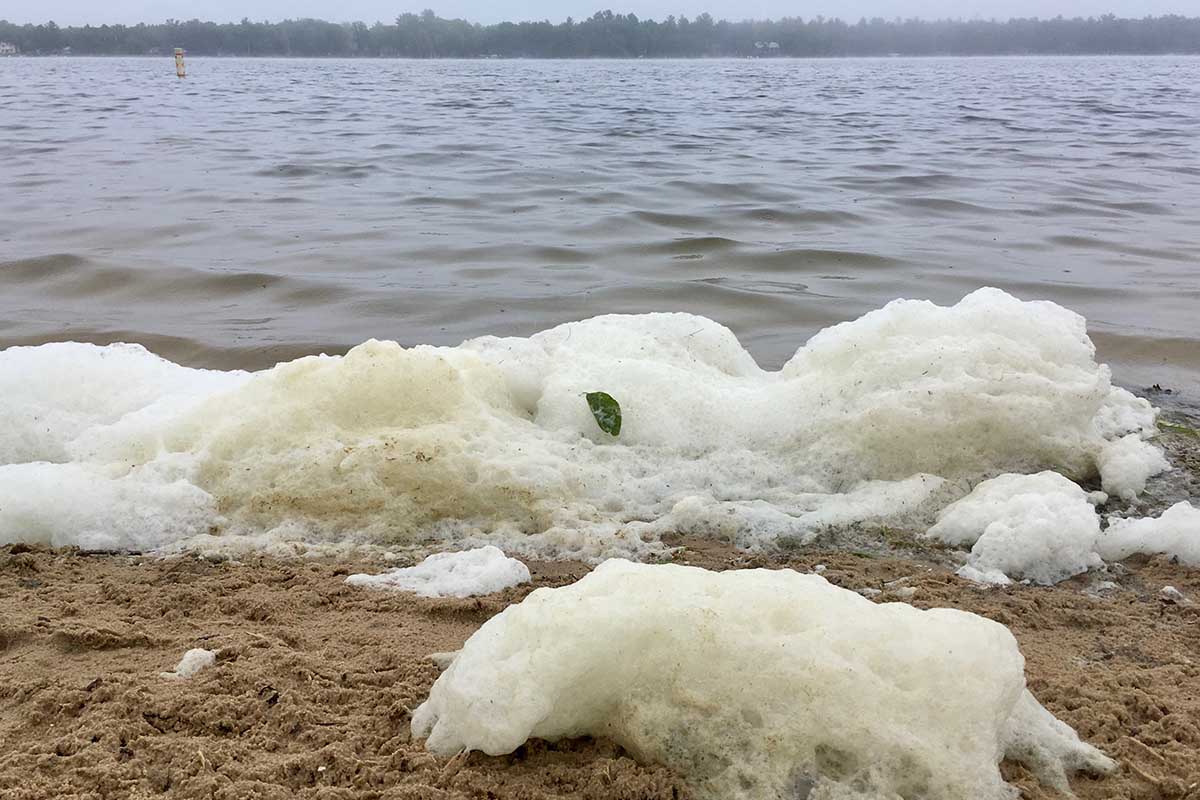- Beach Monitoring

Warm weather makes our local public swimming beaches a popular recreation choice. To be sure public bathing beaches are safe for swimming, the BLDHD partners with The Watershed Center Grand Traverse Bay to test 8 public bathing beaches in the district for water quality during the summer swimming season. The water is tested for the indicator organism E. coli each week.
Is the water safe for swimming?
Most of the time, the water at beaches is safe for swimming. However, occasionally harmful bacteria may also be in the water. Swimming or playing in unsafe water could result in illness symptoms like diarrhea. To know if a swimming advisory has been posted at a public beach:
Where does pollution come from?
Beach water becomes contaminated when rainwater washes pollutants (like animal feces, fertilizer, pesticides, and trash) from the beach sand, yards, farms, and streets into the lake water. Pollutants can also come from sewage treatment plants and septic tanks that are not working properly. The pollutants contain microorganisms that can cause human illness. Microorganisms are tiny living creatures that are too small to see with your eyes, so you can’t tell if the water is clean by looking at it. Not all of them are bad, but some can make you sick. Some microorganisms that can be found in beach water include bacteria, viruses, worms, and protozoa.
Bacteria can lead to infections, diarrhea, and stomach aches. Viruses can cause fever, colds, and intestinal infections. Some illnesses caused by worms have symptoms such as coughing, chest pain, fever, vomiting and restlessness. While protozoa can cause intestinal infections, stomach cramps and skin rashes.
Higher than normal E. coli numbers can be expected after heavy rainstorms, especially if large numbers of geese and gulls frequent a beach. Rainstorms wash bird droppings and other contaminants from the beach into the lake water, increasing the amount of E. coli in the water. Symptoms of exposure to E. coli include gastrointestinal problems such as nausea and diarrhea.
According to the United States Environmental Protection Agency (EPA), the presence of E. coli bacteria in large numbers indicates that fecal contamination has occurred, and harmful pathogens may be present in the water. When testing finds unacceptable E. coli levels an advisory notice is posted at the beach by the beach owner to protect public health until the contamination has cleared.
Test results from regularly scheduled beach monitoring may be viewed on the EGLE Beach website. Beaches typically monitored during the summer include:
Please be aware that E. coli levels are more apt to increase after high wind and rain events. “The Watershed Center also reminds beachgoers to not swim near storm drains, especially during and immediately after rain events, as water from the storm drain may contain E. coli and other harmful pathogens from animal feces that are washed into the drains in a storm. The risk of elevated E. coli levels after a rain event decreases as sunlight breaks down the bacteria in open water.” Quote is from The Watershed Center Grand Traverse Bay website.
Many organisms live in the Great Lakes, including algae. When certain conditions are present, such as high nutrient or light levels, these organisms can reproduce rapidly. Dense populations of algae are called a bloom. Some blooms are harmless, but when the blooming organisms contain toxins, other harmful chemicals, or pathogens, it is known as a harmful algal bloom (HAB). HABs can cause death of fish and fowl of nearby shorelines, and produce harmful conditions to aquatic life, humans, and pets.
Always report suspicious-looking algae by calling the Environment Assistance Center at 1-800-662-9278 or sending an e-mail to AlgaeBloom@Michigan.gov.
For more information, visit this website:
Michigan Department of Environment, Great Lakes, and Energy – Harmful Algal Blooms
Resources

Foam can often be found on Michigan’s lakes and rivers year round. Foam can occur naturally or because of pollution in the water. Natural foam can form from decomposing plants and algae and could contain bacteria. Chemicals, like
surfactants or detergents, in the water also cause foam on lakes and rivers. To best protect your health, the Michigan Department of Health and Human Services (MDHHS) recommends rinsing any lake or river foam off your skin.
Naturally occurring foam:
Resources:
What is swimmer’s itch?
Swimmer’s itch, also called cercarial dermatitis, appears as a skin rash caused by an allergic reaction to certain microscopic parasites that infect some birds and mammals. These parasites are released from infected snails into fresh and salt water (such as lakes, ponds, and oceans). While the parasite’s preferred host is the specific bird or mammal, if the parasite comes into contact with a swimmer, it burrows into the skin causing an allergic reaction and rash.
Symptoms of swimmer’s itch may include:
How to reduce the likelihood of developing swimmer’s itch:
Benzie Office
6051 Frankfort Hwy, Ste 100
Benzonia, MI 49616
Office Hours
Monday-Friday
8am-12pm and 1pm-4:30pm
Phone: (231) 882-4409(231) 882-4409
Fax: (231) 882-2204
Leelanau County
Health Services
7401 E Duck Lake Rd., Ste 100
Lake Leelanau, MI 49653
Office Hours
Monday-Friday
8am-12pm and 1pm-4:30pm
Phone:
(231) 256-0200(231) 256-0200
Fax: (231) 882-0143
Leelanau County
Environmental Services
8527 E. Government Center Dr. Suite LL-007
Suttons Bay, MI 49682
Office Hours
Monday-Friday
8am-12pm and 1pm-4:30pm
Phone:
(231) 256-0201(231) 256-0200
Fax: (231) 256-0225